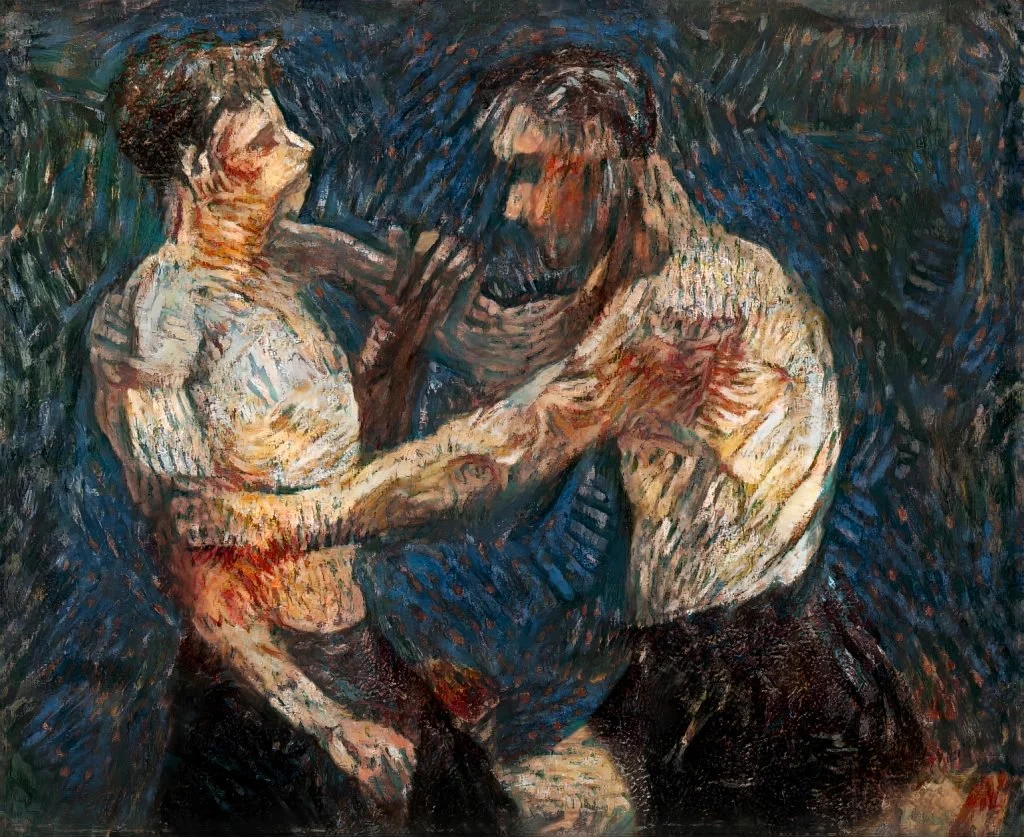In the past month, AI has been dominating arts news. As its role as a collaborator and partner in visual art projects grows in popularity, many question the ethics behind AI and even object to its use in the arts entirely. There’s no doubt of its benefit in certain contexts— in the area of cultural preservation projects, the technology expedites the process significantly. Understandably in the artist community, the looming fear persists that it will displace human artists. Many oppose calling AI-generated or AI-assisted art “art.” While the future is uncertain concerning the legality and ownership of such “artwork,” these conversations are both imminent and important as AI gains momentum in the visual arts. As conversations continue, it is necessary for those in the arts fields to stay informed on the various issues involving AI in art and be informed of how the law adapts.
To start the news roundup, we’ll look at another pressing topic in arts and technology: how the law has been catching up to another controversial medium, NFTs.
Pennsylvania and Washington Become the First US States to Tax NFTs
Pennsylvania and Washington have become the first two states to take steps toward taxing NFTs—A major development in NFT policy. They have explicitly listed NFTs as “digital assets subject to sales and use taxes.” Neither state has enacted new legislation on the issue but interpreted existing legal precedents on digital transactions to form new guidelines. There are several challenges to implementing taxation on NFTs. Given the digital environment where transactions occur, it’s difficult to source the locations and identities of buyers and sellers. Additionally, some states have acknowledged that NFTs may be taxable, while others have not. Federal regulation for NFTs is also not fully set in place. The potential precedents set by Pennsylvania and Washington could lead more states to follow suit.
An A.I.-Generated Picture Won an Art Prize. Artists Aren’t Happy.
This story has been circulating on many news outlets and has launched a major debate on the role of AI in visual art. Jason Allen entered a Colorado State Fair art competition with his AI-generated work, “Théâtre D’opéra Spatial.” He won in the category of emerging digital artists. Artists and the public alike have accused Allen of cheating. Others have commented on the “death of artistry” and the machine takeover of the arts following a trajectory that would replace human artists altogether. Allen has fought back against critics, claiming that using AI as a creative collaborator is wonderful and that he feels inspired to see what he can create. He also says that he empathizes with working artists who fear being put out of work by AI or other technologies. He believes their anger shouldn’t be directed towards the technology itself, or the individuals that use it. Rather, it should be directed towards companies that choose to replace human artists with this technology.
Artist receives first known US copyright registration for latent diffusion AI art
Continuing on the theme of ethical use of AI in the arts, a New York-based artist just received copyright protection for their graphic novel that featured AI-generated art. Kris Kashtanova created artwork for their comic, Zarya of the Dawn, with the assistance of Midjourney, an AI image generation platform. The US Copyright Office has ruled out copyright registered to AI as the sole author of a piece, but it has not ruled against copyright on AI-assisted pieces. While the issue of copyright and AI-generated artwork is still alien to many, some companies are taking steps to avoid potential legal issues. Earlier last week, Getty Images announced that it is banning the sale of AI-generated artwork due to fear of “unaddressed rights issues.” Getty has also expressed concerns over ethical issues of training AI software on proprietary human works of art for the purpose of artificial image generation.
Two Ph.D. students at University College London, George Cann and Anthony Bourached, and artist Jesper Eriksson have been using AI to reconstruct lost underpaintings. The team uses the AI software Oxia Palus to reconstruct paintings that have been discovered through X-ray beneath existing works of art. The AI was trained on other examples of the particular artist’s works to create, as accurately as possible, an image from an X-ray style image. This project is called NeoMasters, and includes reconstructed works from Picasso, Van Gogh, and Modigliani. The three have recently launched a new project, TextMasters, which uses DALL-E 2 to reconstruct lost paintings from just their text descriptions. So far, some artists featured in this collection include Velázquez, Titian, and Leonardo da Vinci.
Sources:
Edwards, Benj. “Artist receives first known US copyright registration for latent diffusion AI art.” Ars Technica. September 22, 2022. https://arstechnica.com/information-technology/2022/09/artist-receives-first-known-us-copyright-registration-for-generative-ai-art/.
Edwards, Benj. “Fearing copyright issues, Getty Images bans AI-generated artwork.” Ars Technica. September 21, 2022. https://arstechnica.com/information-technology/2022/09/fearing-copyright-issues-getty-images-bans-ai-generated-artwork/.
Gault, Matthew. “An AI-Generated Artwork Won First Place at a State Fair Fine Arts Competition, and Artists Are Pissed.” Vice. August 31, 2022. https://www.vice.com/en/article/bvmvqm/an-ai-generated-artwork-won-first-place-at-a-state-fair-fine-arts-competition-and-artists-are-pissed.
Lawson-Tancred, Jo. “Scientists Are Training A.I. to Reconstruct Long-Lost Underpaintings by Artists Including Van Gogh and Leonardo da Vinci.” Artnet. September 1, 2022. https://news.artnet.com/art-world/scientists-are-training-a-i-to-reconstruct-long-lost-underpaintings-by-artists-including-van-gogh-and-leonardo-da-vinci-2168669?mc_cid=c6fa9921e1&mc_eid=3a8a524555#new_tab.
Liu, Jasmine. “Pennsylvania and Washington Become the First US States to Tax NFTs.” Hyperallergic. September 6, 2022. https://hyperallergic.com/758517/pennsylvania-and-washington-become-the-first-us-states-to-tax-nfts/?mc_cid=7c3f5f359f&mc_eid=3a8a524555#new_tab.
Roose, Kevin. “An A.I.-Generated Picture Won an Art Prize. Artists Aren’t Happy.” New York Times. September 2, 2022. https://www.nytimes.com/2022/09/02/technology/ai-artificial-intelligence-artists.html?smid=nytcore-ios-share&referringSource=articleShare.
South Dakota v. Wayfair, Inc. 585 U.S. (2018).


